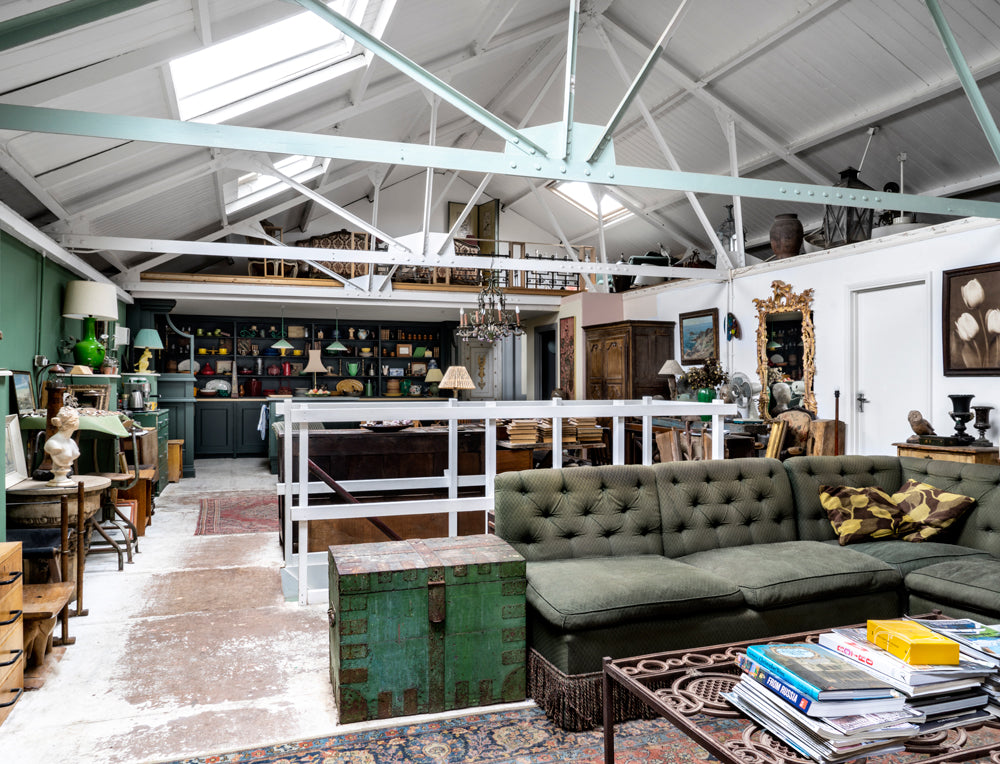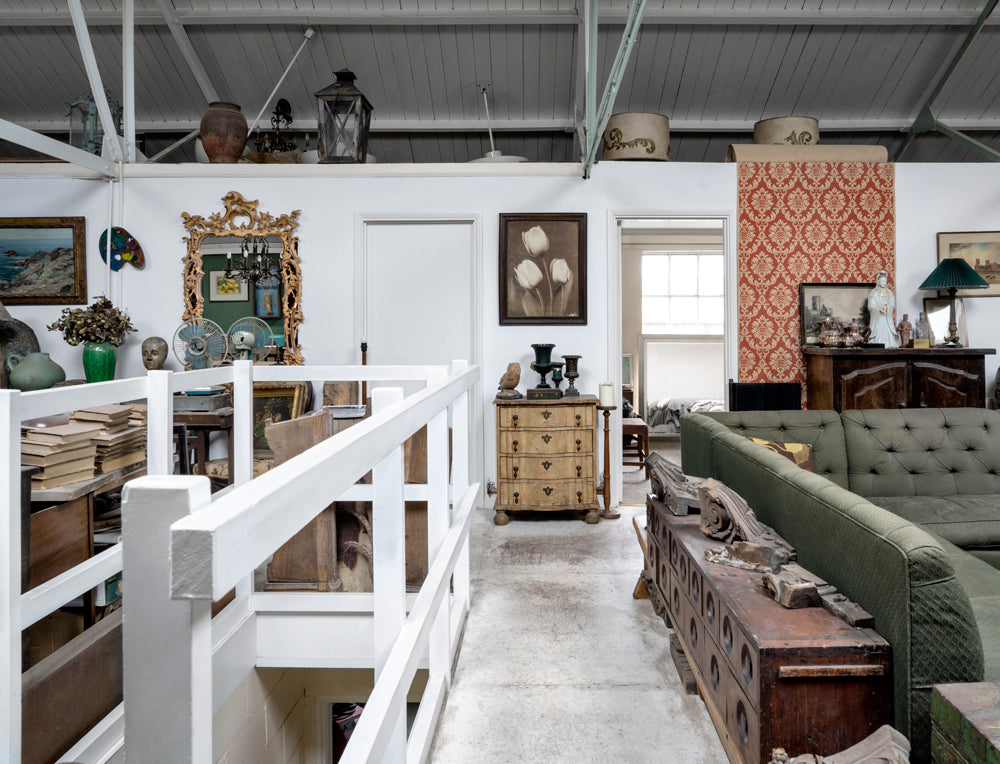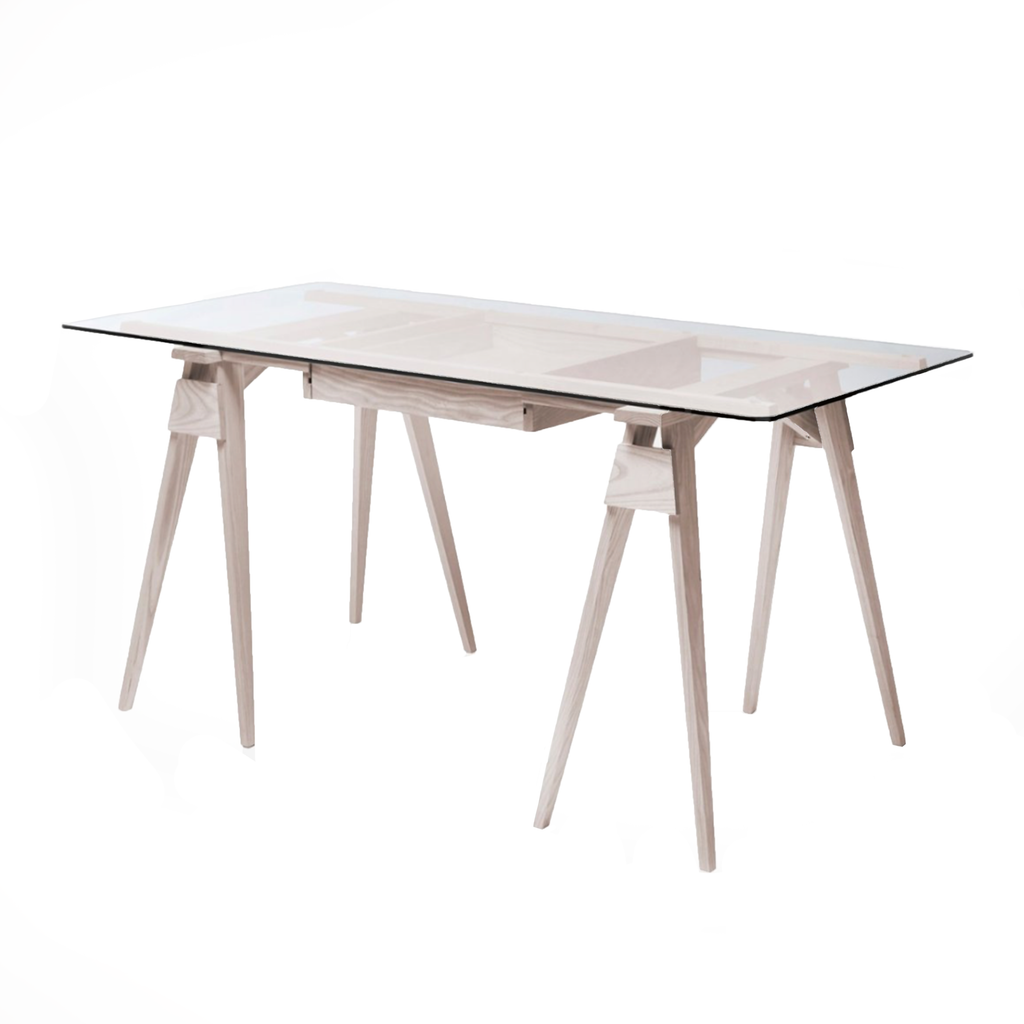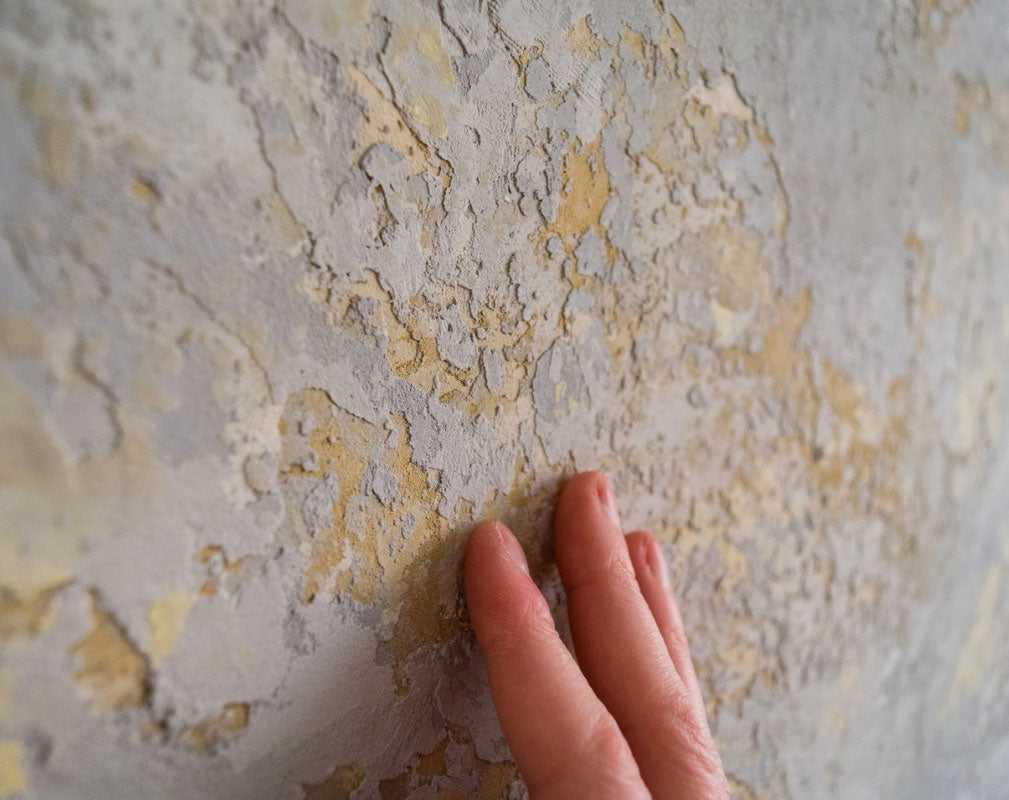
Handmade or hand-selected, we're proud to support exquisite craftsmanship and specialist skills. Join us as we sit down with artisans, curators and designers in our Meet The Designer series.
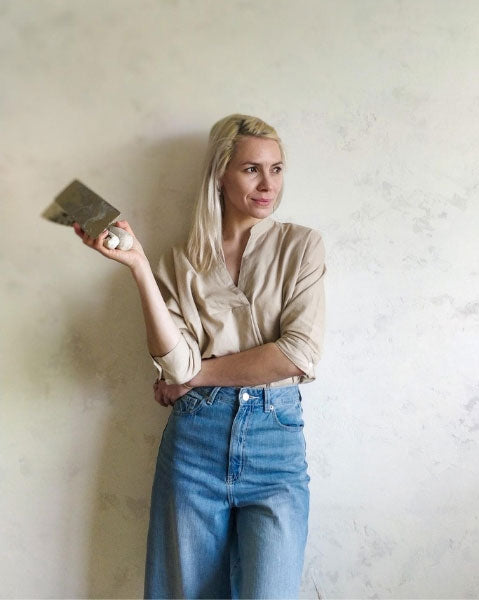
When it comes to artisan design innovation that transforms spaces and excites the senses, you need look no further than the unique, pliable plaster designs and products that are created by Vacarda Design. We took some time out to talk to Tanya Vacarda about her unique surface design techniques and how her fledgling studio is growing from strength to strength.
How did Vacarda Design begin?
I was always more into academia; I have two university degrees and I thought that was going to be my path. Interior design and being creative was more of a hobby that I never acknowledged until I received the Best Considered Interior Design UK (amateurs) from Remodelista for my house renovation project. That made me think of what I really wanted to do in my life, what it was that I truly enjoyed doing every day.
By that time I already had quite good self-taught plastering and faux effects skills and was working on a few interior projects in Belfast. I enjoyed interior design but I kept thinking about creating my own finishes. That and my experience of the difficulties of on-site decorative plastering made me think about a more flexible wall solution.
About a year ago, I put interior design on hold and spent my free time experimenting with various materials and application techniques until I made what I now call a pliable plaster sheet. I showed it to a few professionals, got their approval and a few months later I was in London presenting my first pliable plaster finishes at the Surface Design Show. That’s when Vacarda Design first appeared.
What is your background and what do you specialise in?
I have two degrees in Philology and Socio-Political studies and an incomplete Interior Design Diploma. I spent too many years studying theory, so when the course came into conflict with working on projects I dropped off. I learnt so much more through actual work and interaction with clients.
I acquired my skills of decorative plastering when renovating my own house where I had more than enough walls to plaster and decorate. And I had time, so I practiced a good deal of it, ruining a dozen or so square meters of trial boards.

“Touch is a great thing. When we touch something we involuntarily pause because of how our brain processes tactile information, it takes a few moments to read it. In this respect, the pause is the closest thing to mediation, it encourages mindfulness. ”
Decorative texture finishes are my passion and that became my speciality. In a way, I am glad I did not have any formal training. The way I learnt was through curiosity. I envisioned designs and then practiced creating them, learning about the material behaviour in the process. My skills did not limit my imagination, they developed from it.
Can you tell us a little more about the materials used in your work?
I use a mixture of Italian wall plasters, fine and course. I mix those to create a strong tactile effect texture. It’s unconventional, I was told, usually the plasters are used on their own for specific effects but not together in combination. Then I infuse cotton or linen fabrics with the plaster and, lastly, I use textile embellishments to decorate the surface. Last year, I experimented with natural dried grass and flowers. The results were quite interesting, I am tempted to try it again for new wall coverings.
Can you tell us about the design and making process?
I keep all my ideas in a paper notebook, collecting those throughout the day or week. It’s full of quick notes and sketchy patterns. I review those every now and then and elaborate the details. The design is more in my head than on paper. It’s hard to explain, but I know how the plaster behaves and what I can do with it and it’s not always possible to draw the texture effects I have in mind, sometimes it’s just easier to make it than to draw it.
Then it’s down to texture and colour samples before the final work is made. I first infuse a prepared fabric with a plaster mixture, let it dry a little and then begin building up the texture with layers of plasters. At this point it’s very hands on work. I need to control the plaster’s thickness and moisture levels. Too thick a layer and the plaster won’t remain pliable once it cures.
Colour is another thing. The colours change when the plaster dries so I need to adjust my colour shades on the go depending on the design, constantly mixing and plastering. Some effects can only be created on a dry surface. It usually takes two to three day’s work for one piece.
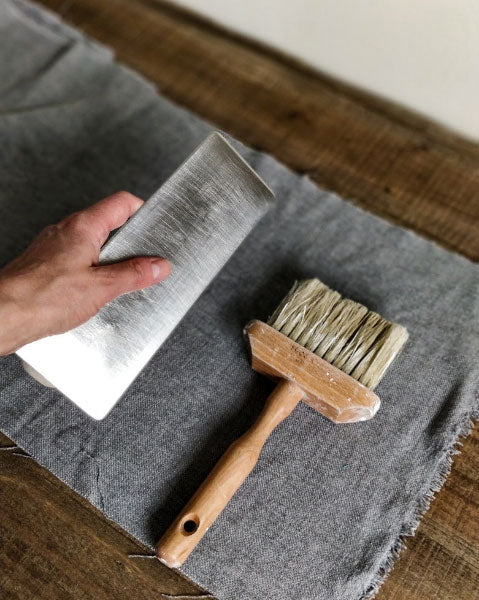
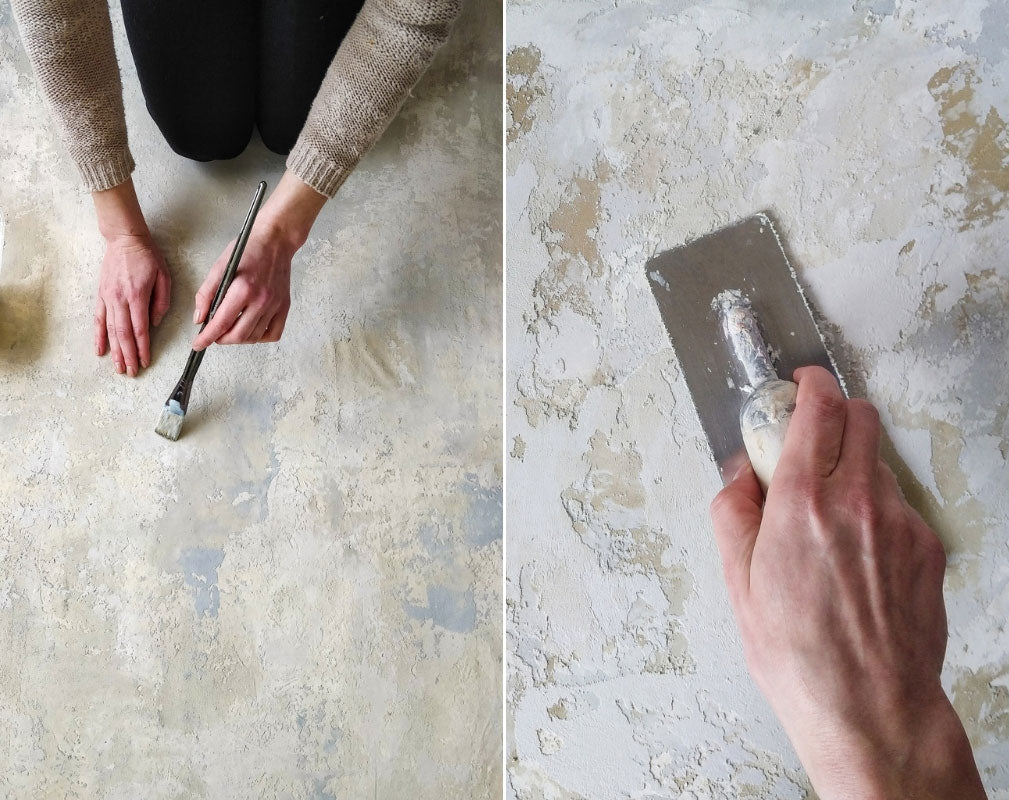
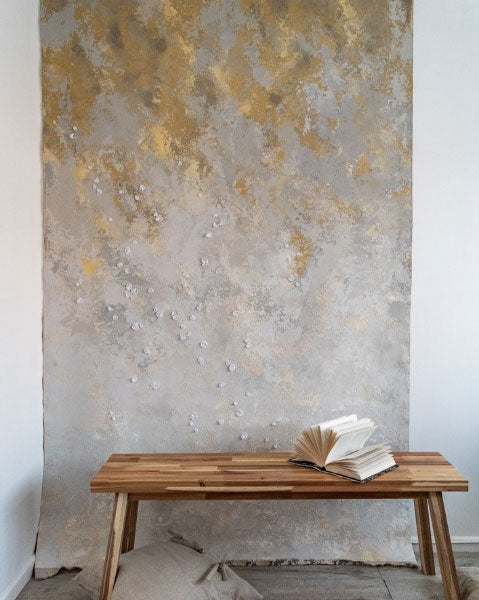
Texture and touch are important elements in your work. Can you explain?
I love texture. Tactile sensations are very stimulating, there are so many nerve endings in our fingertips that it’s mind-bogging that we don’t consciously enjoy this sense more often. As children we used to learn about the world through touch but when we grow up we become too busy to pay attention to these stimuli.
It’s also something that was part of my routine for dealing with anxiety a few years ago. I had to learn to focus on the moment and my immediate surroundings. I think that’s when I became more aware of the textures around me and how dull many of those are in our spaces.
Touch is a great thing. When we touch something we involuntarily pause because of how our brain processes tactile information, it takes a few moments to read it. In this respect, the pause is the closest thing to mediation, it encourages mindfulness. And visually, texture is so much more vivid and entertaining for an eye than a flat surface because of how it interacts with the lights.
Who are your decorative surfaces aimed at?
Businesswise, it’s the bespoke and luxury interior design and hospitality industry, although I also have clients who buy my creations for their own homes. They come from various cultural and professional backgrounds but they all seek something new and timeless at the same time, works that surprise and last. I guess it’s a reaction to the market oversaturation with manufactured easy products of the past few decades. Now the interest is on the objects that help to create engaging spaces, and tactility does that very well.

What does a typical working day look like for you?
I don’t have a fixed routine, but I do try to separate admin tasks and crafting, as these require a different mindset. For example, I can spend a few hours in the morning on orders and answering emails then walk my dog at lunch time and make myself a cup of matcha tea. It’s become a ritual for me, it helps me relax and clear my mind. So many good ideas and solutions come to me while I am out chasing my pug or sitting still on the bench trying to practice my zen. Later in the day, it’s sketching, plastering, finding new materials and then I catch up on social media in the evening. There are days when I just plaster or design. I work all day long, it scares me but I guess it’s unavoidable when you're just starting out.
What exciting updates and developments can you tell us about?
In two weeks, I am going to New York to take part in the ICFF show together with the British European Design group. It’s the first time I will participate in a trade event of such magnitude and feeling the pressure but it’s exciting nonetheless. Then, I am working on a new collection of finishes for walls and tapestries, it’s all about earthy colours and natural fibre textile. It’s inspired by the local Northern Irish weavers, and I am collaborating with one of them on new texture effects.
We would like to thank Tanya for taking the time to talk to Warehouse Home. For more information, visit her website.
